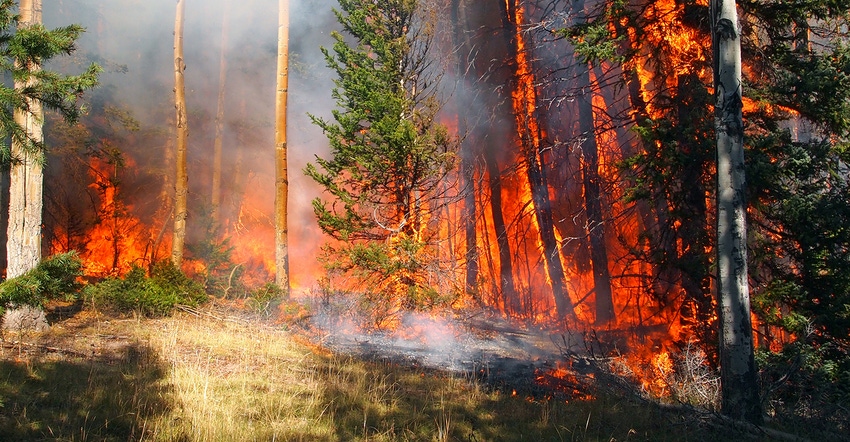November 24, 2017

In the West, a massive wildfire in the headwaters of a watershed can devastate the water supply — both quantity and quality — so important to the many beneficial uses in that river basin, including the irrigation of farms and ranches that produce some of our nation’s high-quality food and fiber.
There are a series of complex factors that are to blame for what has become an annual exercise in many parts of the Western U.S. More large, complex fires are occurring simultaneously, often on landscapes with heavy fuels and steep terrain. The fire season is now a year-round occurrence, and the expansion of construction into the urban-wildland interface now puts 44 million homes at risk. According to the U.S. Forest Service, conditions on the ground are worsening, and that agency is now projecting the fire budget to consume two-thirds of the overall budget four years sooner than originally calculated.
Funding for federal wildfire management — particularly for suppression operations on federal lands — is the issue targeted by several bills introduced in Congress this year. However, a fire funding fix is only a partial solution. Such a fix should also be paired with management tools.
The Family Farm Alliance in October formally supported the proposed Wildfire Prevention and Mitigation Act of 2017, introduced by Sen. John Barrasso (R-Wyo.). The bill is intended to discourage litigation against the USFS and the Bureau of Land Management relating to land management projects. It does so by requiring the Secretary of the Interior to develop a categorical exclusion under the National Environmental Policy Act for covered vegetative management activities carried out to establish or improve habitat for greater sage grouse and mule deer. The bill also seeks to address the forest health crisis on National Forest System land, and expedite and prioritize forest management activities to achieve ecosystem restoration objectives, among other purposes.
If it’s passed, what happens?
The legislation would streamline the application of environmental laws by allowing landscape-level land management plans to guide individual actions on the ground, without duplicative administrative process under federal environmental laws. The bill would direct the creation and use of categorical exclusions already allowed under NEPA in preventing wildfires and restoring forest habitat and ecosystems more effectively and on a timely basis. It would eliminate duplicative or unnecessary processes, use streamlining tools already allowable under the law and promote actions instead of litigation. These provisions could help agencies use their limited resources to actually implement land management actions designed to prevent wildfires and improve habitat for priority, endangered and/or threatened species. That is much more preferable than spending those resources on more bureaucratic process and litigation.
The bill does not waive or ignore existing federal environmental laws; it would simply make them work better.
The Wildfire Prevention and Mitigation Act of 2017 would improve our Western landscapes, protect our valuable water supplies from the devastating effects of wildfires, and allow agencies to improve habitat and restore ecosystems for the benefit of federally important species. This can only lead to improved agricultural use of our public lands.
Keppen is executive director of the Family Farm Alliance.
About the Author(s)
You May Also Like




